Ajay and the Monks of Khawalung
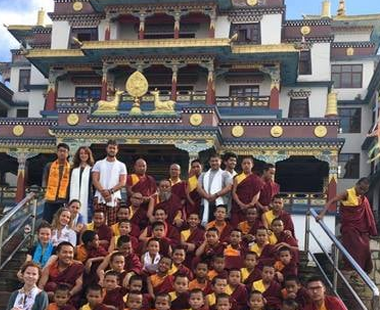
Our fearless leader and CEO of CLCD, Dr. Ajay Gupte, has landed in Nepal along with his teenage son and a friend. This is his 3rd annual trip with his son, who is now 17, to volunteer at the Khawalung Tashi Choeling Monastery which houses 60 young monks – boys ages 4-21. While there they also help at an orphanage which houses 12 children ages 8-14.
During their month long stay, they live at the monastery and help out with whatever is needed, from teaching English, math, and science to managing budgets and developing marketing. Dr. Gupte’s own words, “it feeds my soul and my son has learned to give a helping hand.” To be sure it is one amazing answer to the steadfast return to school question, “what did you do over summer vacation?” Dr. Gupte and his son, Aakash, feel privileged to have the opportunity to help the monastery and give back. It is important for us all to get involved and help others whether it be in a foreign country or right in our own backyard.
So ask yourself, your students, or your faculty, “What did you do over your summer vacation?” and then ask “what could you do?”
Below is a direct journal entry from Dr. Gupte. Enjoy the read and then follow up with our custom related inquiry based activity.

I have had the privilege of coming as a teacher, a mentor, a volunteer, to the Khawalung Tashi Choeling Monastery for a month for past three years. We have witnessed many amazing events during the time but an event today was even more remarkable. We witnessed 22 young monks line up in front of Buddha and a high lama to shed their past life and be born into another.
A monk takes his initial vows when he is inducted into the monastery as a young monk. He vows to follow the prescripts set in Buddhism and this is the first day he is made aware of these rules. Each student in turn goes to the high-lama and offers a small token of gratitude. The lama then snips off a small piece of his hair and puts it in the burning vessel. This is symbolic of separation of past life and new life. He then gives a name he feels appropriate for the student and from then on, the monk is known by his new name. He is now a monk. He is also now attached to the monastery for life for as long as he chooses to be a monk. He cannot leave one monastery and join another.
A monk gets up before 5:00am each day and studies for 10 hours each day. Strict bedtime is 9:30pm. Saturdays and Sundays are mostly open except for prayers. A monk is a student of life and Buddhist philosophy. In their early years, they are taught Tibetan teachings largely through rote repetition and only as they grow up do they start to discover the deeper meaning of the words. By that time, they have memorized the teachings and slowly they spend their life discovering their true meaning. Since they exist in the real world, they are also taught mathematics, sciences, English and computers. Monks spend 5-7 years of their life in the confines of their home monastery and they only visit family during summer breaks. It is not easy and so if they graduate, a monk then goes to college to learn the deeper philosophy. If not, they are given plenty of chances but may separate and return to non-monastic life.
They spend on average about 9 years in college at which point they become a lama. If they take and keep the vow of celibacy then stay a monk and are part of a monastery, otherwise, they lose the title of a monk but still may be considered a lama. If they stay a monk, they can continue their development towards enlightenment by either getting accepted for a 3-year meditation stint or for further learnings. As they progress, they also gain more standing and respect in the community.
In the end, the goal of their life is to alleviate suffering in the world and to help humanity. In doing so, they gain their enlightenment. A monk believes that attachments to people and things is the true cause of suffering and so they strive to separate themselves from earthly belongings. A true monk strives to have nothing else beyond his daily needs which he hopes to get through charity from others, as he strives to reach enlightenment.
–Dr. Ajay Gupte
Lesson Plan: How can you use inspiring stories in the classroom to provide meaningful educational experiences? An inquiry lesson about volunteering for Grades 6 & 7.
Reading List:
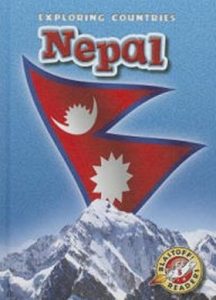 |
Nepal By: Lisa Owings Where is Nepal? — The land — Mount Everest — Wildlife — The people — Daily life — Going to school — Working — Playing — Food — Holidays — The Sherpas of Nepal — Fast facts. |
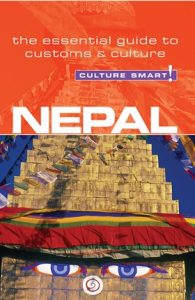 |
Nepal By: Tessa Feller Looks at the social life, customs, and national characteristics of Nepal, including coverage of such topics as values, attitudes, religion, family, food, language, and social relationships. |
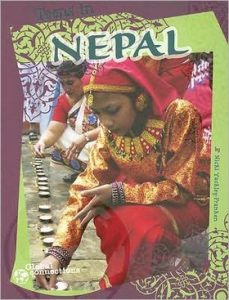 |
Teens in Nepal By: Nicki Yackley-Franken Teens in Nepal is a part of Global Connections, a series that uncovers the challenges, pastimes, and customs of teens around the world. |
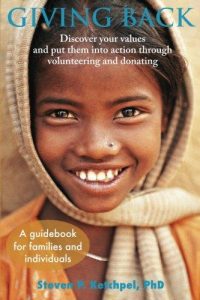 |
Giving Back: Discover your values and put them into action through volunteering and donating By: Steven P. Ketchpel Getting started — Involving your family — Volunteering basics — Donating basics — Volunteering with children — Donating with children — Volunteering strategically — Thinking strategically — Implementing your plan — Assessing your progress — Donating strategically — Conclusion. |
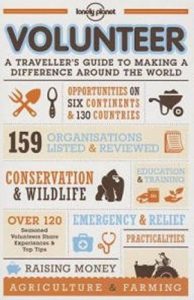 |
Volunteer: a traveller’s guide to making a difference around the world By: Charlotte Hindle Presents a travel guide for individuals who want to make a difference in the world, describing a wide variety of global volunteer opportunities with advice on organizations, locations, travel arrangements, packing, and adjustment to the volunteer experience. |



